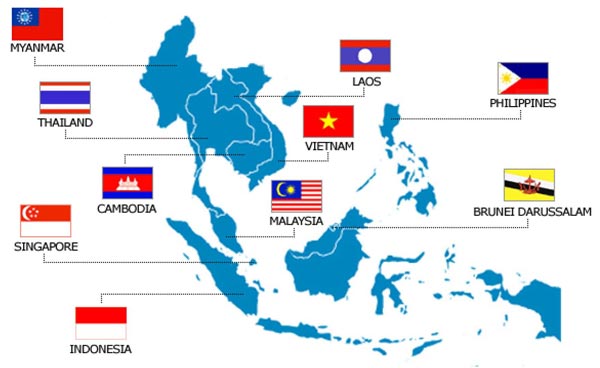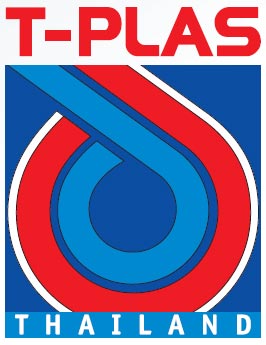|
ASEAN Medical Devices &
Plastics Sectors : Immense Market Potential
ASEAN (Association of Southeast Asian Nation). Economy
The ten member states making up ASEAN include Indonesia,
Malaysia, Philippines, Singapore, Thailand, Brunei,
Vietnam, Laos, Myanmar and Cambodia. ASEAN’s fertile
consumer base with a combined population of over 600
million and a combined GDP of US$ 2.6 trillion, as well as
presence in the global market, enables the region to tap
the right opportunities, hinging on the region’s rising
middle class sector and substantial consumer base. One of
ASEAN’s top export sectors by value is plastics and
plastic products earning US$ 39.3 billion in export
revenues in 2013, the International Trade Statistics
reported.
The sector’s production rates have witnessed a steady
average growth over the recent years, especially in the
ASEAN-6: Indonesia, Malaysia, the Philippines, Singapore,
Thailand, and Vietnam, which account for more than 95 % of
regional GDP, according to McKinsey & Company. Countries
like Cambodia and Myanmar are growing strongly, with
increased economic liberalisation and development, but
will still contribute only a small percentage of
manufacturing foreign direct investment (FDI) in the
coming years.

ASEAN’s Plastics Industry
ASEAN’s plastics industry is anticipated to expand in the
coming years.
In the ASEAN Business Outlook Survey , by the American
Chamber of Commerce Singapore and US Chamber of Commerce,
it was revealed that 19 % of ASEAN businesses themselves
plan to shift investment or business from China into their
own region. Respondents also identified Indonesia as the
most attractive country for new business expansion,
followed by Vietnam, Thailand, and Myanmar. The
availability of low-cost labour in countries such as
Cambodia, Indonesia, Laos, Myanmar, and Vietnam could be a
competitive advantage.
With the growth of ASEAN countries’ consumer bases,
broadening of plastic import and export markets, and
expanding foreign trading powers, ASEAN’s plastics
industry offers significant opportunities.
ASEAN Medical Devices Industry : Immense Market Potential
Medical manufacturing is one of the key growth areas in
countries belonging to the Association of Southeast Asian
Nations (ASEAN). A rapidly expanding middle class is
largely responsible for a projected near doubling of the
medical device market in these countries, from $4.6
billion in 2013 to $9 billion by 2019.
Three ASEAN countries - Malaysia, Indonesia, and Thailand
- account for approximately 65% of the current medical
device market among the 10 member countries, according to
Matthew Zito, Benedict Lynn, and Emily Liu of business
intelligence firm Dezan Shira & Associates. The other
seven are Singapore, the Phillipines, Brunei, Vietnam,
Laos, Myanmar, and Cambodia.
Medical device markets within the region have been
charting double digit growth rates in recent years, and
will likely continue to do so. “With the increased demand
for better healthcare, encouraged by governmental focus on
healthcare as a priority sector for trade and service
liberalization . . . the upside market potential for
medical devices in the region is immense,”.
The individual medical device markets across ASEAN’s 10
member countries are in various stages of development.
Those with the greatest presence in the medtech market can
be broken down as follows:
-
Malaysia and Indonesia, which are rich in rubber, lead
global production in latex products such as surgical
gloves and syringes. Malaysian exports in diagnostic
imaging have expanded in recent years, according to
research by Espicom, which estimates the country is likely
to see compound annual growth of 16.1% to 2018, with
growth for consumables as high as 24.8%.
-
Singapore, the region’s medical and technological hub, has
a thriving biomedical research and development industry,
and a competitive advantage in advanced
manufacturing. It is home to the manufacturing operations
of more than 30 medical technology firms.
-
Thailand also has a relatively robust medical device
market, worth approximately $1 billion and growing 15%
annually, according to Ames Gross, President of Pacific
Bridge Medical (Bethesda, MD).
On the regulatory front, ASEAN member countries have made
significant strides toward developing a mature regulatory
framework for medical devices, both individually and
regionally.
ASEAN countries currently remain reliant on imports to
satisfy demand for medical devices: for example, as much
as 97% of devices consumed in Indonesia in 2013 were
imported, mainly from the United States, Japan, and
Europe. Nevertheless, momentum is building for local
manufacturing to transition toward more advanced products,
as foreign companies move into the region to take
advantage of lower costs and rising demand.
South East Asian Pharma Industry
The South East Asian pharma industry has been growing at
an average of 6-10 percent in the past 10 years. The
governments across the ASEAN region are introducing
universal healthcare programmes, with the consequential
rising demand for all categories of medicines, especially
generic drugs.
Comprising almost 40 per cent of the SEA economic output,
Indonesia is now the largest pharma market in the
Southeast Asia/Asia Pacific region (SEA/AP), experiencing
an impressive 85 per cent growth in between 2007-2013. The
country has the biggest and fastest growing economy in the
SEA region and a pharma economy consisting of
approximately 200 pharmaceutical companies.
There are already 25-30 generic domestic companies with
access to the international market and equally, there are
approximately 35 multinational companies, such as Sanofi,
ACG and Novo Nordisk, established in the area. Most
significantly however, are the remaining domestic
manufacturers, who are increasingly targeting
international sales in neighbouring countries.
|

Sept. 20 – 23, 2017 |
T-PLAS 2017 - A Global Platform with an ASEAN Perspective
on the Buoyant Opportunities in the region.
Bringing together industry leaders from the best local and
international brand names from the plastic and rubber
sectors, T-PLAS 2017 to be held in Bangkok offers a full
spectrum of specialised equipment, high-precision
machinery, semifinished products, raw materials,
applications and solutions serving the plastic and rubber
value chain. Gain special insights on growing markets such
as manufacturing of plastics for the medical, packaging,
and automotive sectors.
A synergistic platform with Focused Medical & Healthcare
Plastic Pavilion
- Global Innovations , Strategic Presence
A dedicated “Medical & Healthcare Plastic Pavilion” is
conceptualized by “T-PLAS 2017 “ in association with
“MEDICAL PLASTICS DATA SERVICE” which will be participated
by Exporters and Manufacturers of Materials, Machinery and
Products to the Medical Plastics, Medical Devices and
Pharmaceuticals Industries. |
The Pavilion will showcase latest developments by regional
and international exporters And manufacturers Of Medical
Plastics Processing Machinery, Pharmaceuticals / Medical
Products Packaging Machinery, Medical Polymers, Components
/ Tubings /Adhessives, Packaging Films / Pouches etc.
Driven by the nation’s various burgeoning sectors such as
Medical, Pharmaceuticals, Packaging as well as Lifestyle,
Thailand is well positioned to become Southeast Asia’s
very own hub for its plastics and rubber industries. These
areas of interests have seen significant growth in recent
years, and are projected to expand to be heights in years
to come. |
